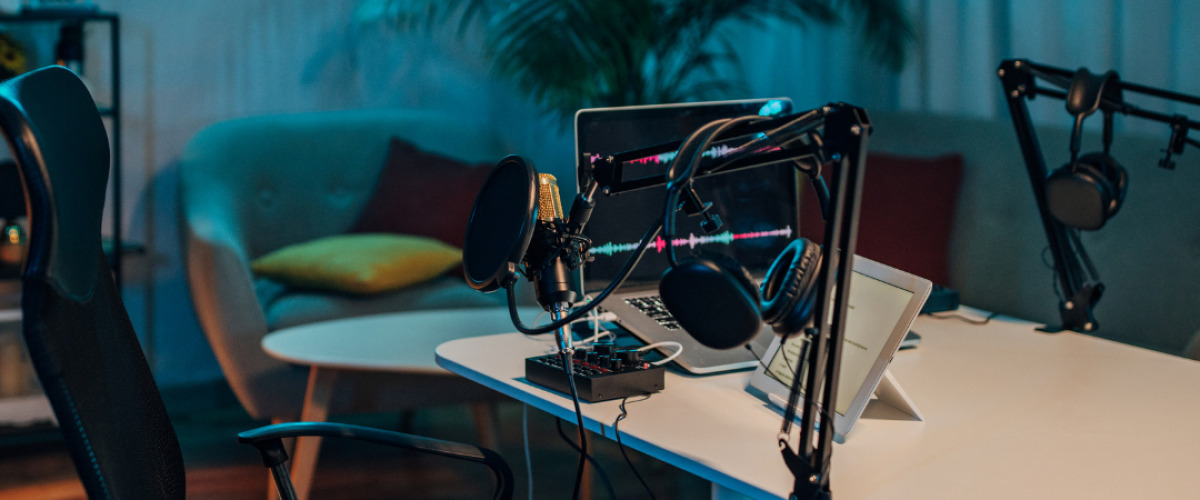
Shifting Habits in How People Tune In
Traditional talk shows used to be the go-to for news, laughs, and long-form interviews. Morning and late-night programs gathered audiences around TVs at fixed times. But those habits have changed. More people now reach for their phones or headphones instead of the remote. Podcasts have stepped into that space—offering similar content, but with more flexibility.
Listeners now choose what they want, when they want it. Instead of being tied to a schedule, podcasts give people the freedom to fit conversations into their day. Whether commuting, exercising, or cleaning the house, there’s always time for a good story or interview. That accessibility has helped podcasts thrive in a way talk shows never could.
Podcasts also bring a more personal tone. There’s no studio audience, no forced laughter, and no commercial breaks breaking the mood. That shift creates something closer to a conversation than a performance—and audiences are responding.
The Rise of Authentic, Long-Form Conversation
One of the biggest draws of podcasts is how relaxed and unfiltered they feel. Unlike short TV segments squeezed between ads, podcasts often give guests an hour or more to share stories, dive into details, and explore ideas. The result is a deeper, more natural conversation.
This format allows topics to breathe. Listeners hear the pauses, the laughter, the thought process. It feels like sitting in the room with the hosts rather than watching from a distance. That sense of closeness is part of what makes podcasts so powerful and memorable.
Well-known podcasters often talk to authors, comedians, scientists, and everyday people in ways that feel genuine. They aren’t limited to soundbites or press tour scripts. Instead, the dialogue flows, often touching on unexpected subjects that reveal something new.
Low Barriers, High Variety
Starting a podcast doesn’t require a big production budget. A decent microphone, quiet room, and passion for a subject are often enough. That low barrier to entry has opened the door for a huge range of voices—far beyond what traditional media used to offer.
Now, you can find podcasts on anything from niche hobbies to international politics. From seasoned professionals to curious beginners, everyone gets a seat at the table. That variety gives listeners more control and lets them build a playlist that fits their interests perfectly.
This shift has led to a rich, diverse media landscape. Talk shows once controlled the spotlight, but now it’s shared by thousands of creators with their own style, focus, and audience. That personal approach has helped podcasts earn lasting loyalty.
Listeners Build Stronger Bonds With Hosts
Podcast hosts often feel like familiar voices. Because episodes are long, consistent, and intimate, listeners begin to form a real sense of connection. Over time, these hosts become part of the daily or weekly routine—much like morning show anchors used to be.
But there’s a difference. Podcast hosts often share more about their lives, opinions, and challenges. This honesty builds trust and a sense of community. Listeners don’t just tune in—they feel like they’re part of something.
Some shows even extend that relationship with newsletters, events, or private listener groups. These efforts build an even stronger audience connection that goes beyond entertainment and into genuine community building.
Celebrity Guests Without the Script
A major reason people used to watch talk shows was the guest lineup. Actors, musicians, politicians—they’d sit down for a few laughs and a few headlines. But with podcasts, those same guests often appear in a much more relaxed setting, far from the cameras and cue cards.
On a podcast, guests often open up in ways they wouldn’t on TV. There’s time to reflect, share stories that wouldn’t make the final cut of a five-minute segment, and show more of who they are. That makes the experience more meaningful for both the guest and the audience.
Some celebrities even start their own podcasts, inviting fans into their world in a direct, personal way. This shift changes the dynamic from host-versus-guest to co-storytellers—and that difference shows in the quality of the conversation.
Flexibility Wins Over Appointment Viewing
Podcasts don’t care what time it is or where you are. That kind of flexibility is one of the reasons they’ve overtaken traditional formats. Listeners can pause, rewind, binge, or skim through episodes on their own schedule. This freedom simply isn’t possible with live or scheduled television.
As lives become busier and more unpredictable, on-demand content continues to rise. Podcasts match the flow of modern routines. They don’t compete with family time, work calls, or errands—they fit around them.
This means podcasts don’t just replace talk shows. They improve on them by removing limits. No channel surfing. No missing an episode because of traffic. Just simple access to content that adapts to how people live now.
Platforms Are Expanding the Reach
Apps like Spotify, Apple Podcasts, and YouTube have made finding and sharing shows easier than ever. With personalized recommendations, playlists, and subscription options, listeners can quickly build a library of voices they enjoy. That convenience helps podcasts grow without needing a traditional broadcast signal.
Social media also plays a big role. Clips, quotes, and highlights are shared widely—sometimes reaching millions before the full episode even airs. This kind of organic spread gives podcasts more visibility than some TV shows ever had.
The growing reach of platforms also means more ad opportunities, better analytics, and larger potential audiences. Podcasters can refine their content, grow their base, and adapt based on real listener data—all without a network executive in sight.
Niche Audiences Are Thriving
Talk shows often tried to reach the broadest possible audience. That meant playing it safe, avoiding certain topics, or simplifying complex ideas. Podcasts, on the other hand, can go deep into a single theme and still succeed. Even a show with a small following can thrive if that audience is loyal.
Whether it’s true crime, parenting, business, mental health, or video games—there’s a podcast for nearly every interest. This approach gives people a space to feel understood and represented in ways that traditional shows rarely allowed.
Niche podcasts don’t need to please everyone. They focus on depth, not reach. That lets them serve their listeners better, stay authentic, and grow by word of mouth. It’s a model built on trust, not ratings.
Podcast Culture Feels More Inclusive
Podcasts aren’t just about entertainment—they’re shaping conversations across cultures and communities. With fewer barriers to entry and more diverse hosts, there’s more room for different backgrounds, accents, and experiences. That inclusivity is changing who gets heard and how ideas are shared.
For many, podcasts feel safer and more open than traditional media. Hosts can speak freely, touch on personal issues, or raise topics that often get overlooked on mainstream TV. Listeners find connection in those voices, often because they reflect their own.
This openness brings new energy to storytelling. It allows voices from all walks of life to share what matters to them—and find listeners who value those stories. That’s something talk shows never fully achieved.
Podcasting Is Redefining Talk Media
Podcasts have grown from a niche hobby into a central part of media culture. They’re not just replacing talk shows—they’re transforming how people consume conversation. With deeper dialogue, flexible formats, and more diverse perspectives, podcasts meet listeners where they are and invite them to stay.
From morning routines to late-night listening, podcasts have become the soundtrack of daily life. They offer company, insight, humor, and inspiration—all on your terms. And as the space continues to grow, it’s clear they’re not just the future of talk—they’re the present.







